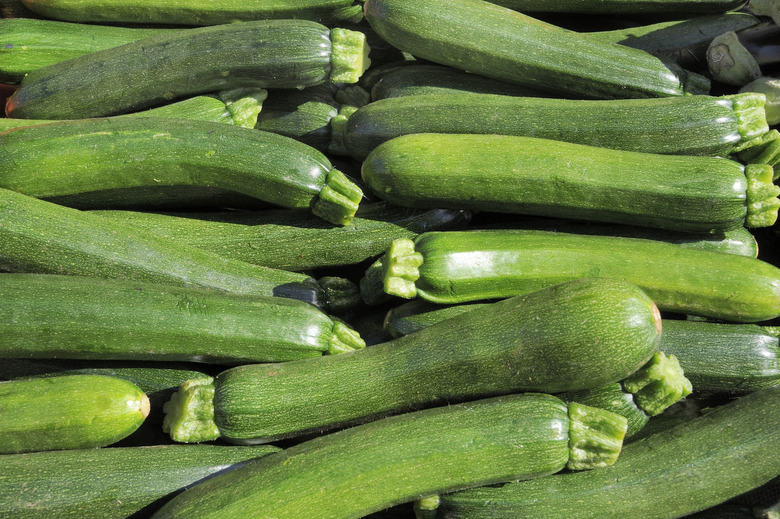How To Grow Zucchini Indoors
We may receive a commission on purchases made from links.
With container gardens, you can have fresh vegetables all year even when garden space is not available. Zucchini (Cucurbita pepo) is a summer squash that grows best in full sun and warm conditions. As container culture gains popularity, many new dwarf or small growing varieties of vegetables are being developed. Compact zucchini varieties are no exception and include the cultivars 'Black Magic,' 'Hybrid Jackpot,' 'Gold Rush' and 'Classic.' Grow zucchini indoors all year round; in winter, start seeds indoors and set the pots in a south-facing window where they will get the most sun.
Things Needed
-
5-gallon pots
-
Potting soil
How to Grow Zucchini Indoors
1. Prepare the Seedling Containers
Fill 2-inch pots with soil-less seed starting mix. Use a pre-mixed formula available at garden centers or make your own by mixing equal parts vermiculite and peat moss. Dampen the mixture and fill the 2-inch pots.
2. Sow the Seeds
Place one zucchini seed in each pot and cover it with 1/2 inch of mix. Place the pots in dappled or filtered sun with a temperature range between 65 and 75 degrees Fahrenheit. Keep the soil around the seedlings damp with frequent light applications of water. The seedlings will germinate in five to seven days and be ready to transplant into a large, permanent container in three to four weeks.
3. Prepare 5-Gallon Container for Each Plant
Fill one 5-gallon container for each zucchini plant. Use a well-draining soil-less potting mix and fill the pot to 1-inch below the lip of the container. Garden centers sell pre-formulated mixes for indoor vegetable container growing. Alternately, mix your own by combining equal parts loam, peat and coarse clean sand. Add a balanced liquid fertilizer to the mix. Check the back of the package to determine the correct amount.
4. Select Healthy Seedlings
Dampen the potting mix with water until it is light and crumbly. Scoop out a shallow hole in the center of the pot large enough to accommodate the root ball of one zucchini plant. Select the strongest of the zucchini seedlings for planting.
5. Plant and Position in a Sunny Location
Slide the seedling out of the small pot and place it into the large container with the base of the stem planted at the same depth in the soil as it was in the former pot. Fill in around the roots and pat down the soil to secure the seedling in the pot. Place the potted zucchini in a sunny window where it will get at least five to six hours of sun each day.
6. Fertilize the Plants Regularly
Fertilize once a week using a fertilizer formulated for complete nutrition. There are many combinations on the market for vegetable growing. A good, basic fertilizer formula like a 5-10-10 or a 10-10-10 fertilizer is suitable. Check the package for the correct application amount and method.
7. Water on a Schedule
Water when the top of the soil feels dry to the touch, usually daily or every other day for container grown zucchini plants. Soak the soil thoroughly at each watering. Place the pot on a saucer or tray to catch water and protect surfaces. Empty the saucer after every watering to prevent water from sitting around the root system.
8. Hand-Pollinate the Flowers
Pollinate the zucchini flowers by hand. When growing zucchini inside, insects are not available to do this job. Male flowers have short stems, while female flowers have longer stems and a broad base that resembles a zucchini fruit. Clip off the male flower, remove its petals and rub its pollen onto the stigma in the female flower's center.
9. Harvest the Zucchini
Harvest the zucchini fruits when they are 3 to 4 inches long and still tender. Harvest continuously as the fruits ripen to encourage the plant to keep producing. Zucchini are ready to harvest 50 to 70 days after planting. Note that if you did not pollinate sufficiently, you will get fewer zucchinis, and if your indoor location had less light than a zucchini requires, it will likely take longer for the fruit to grow large enough.
